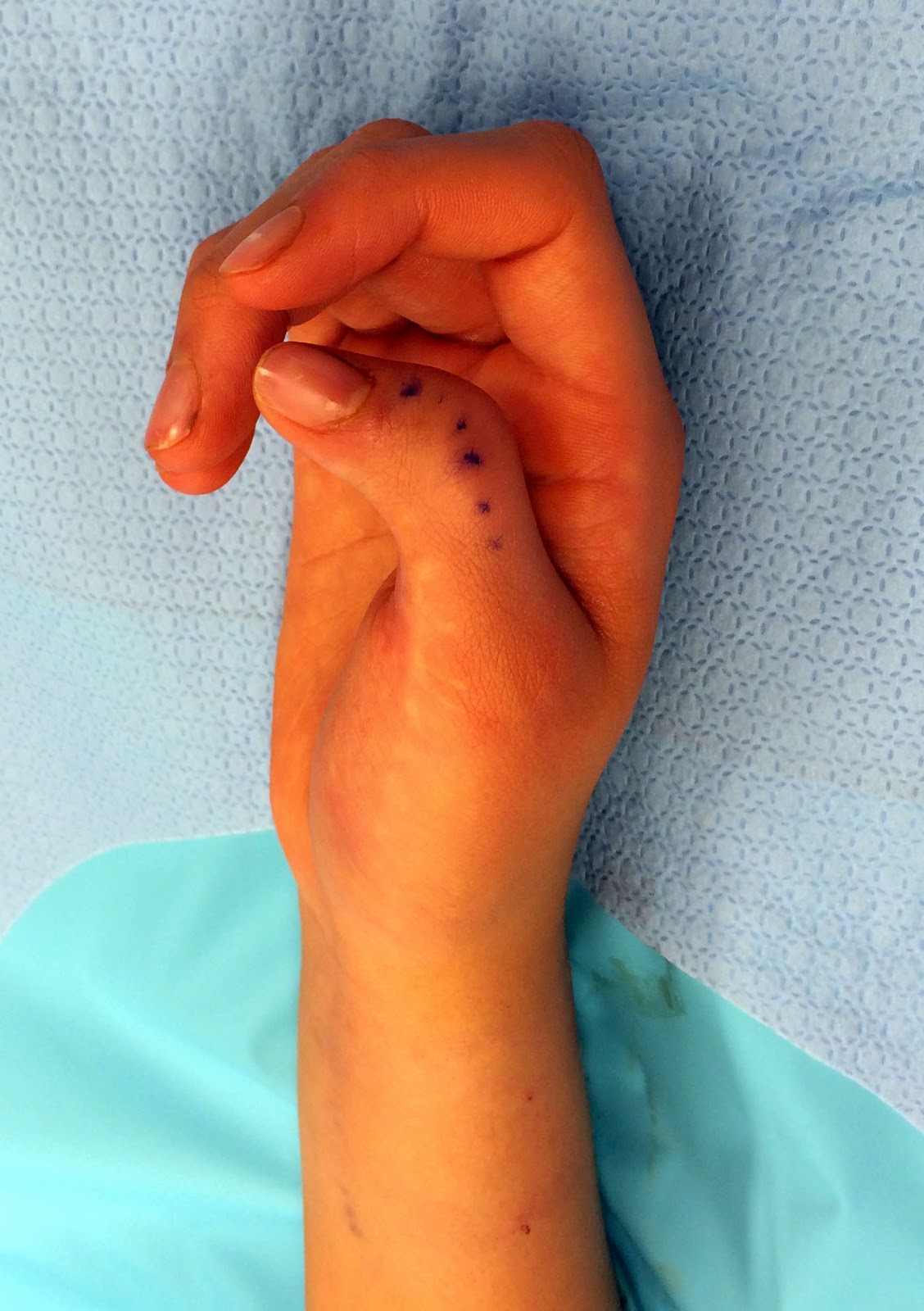Radial polydactyly, an extra thumb, can be more challenging to treat than other types of extra digits. The surgeon cannot simply remove the extra thumb as ligaments need to be recreated and often bones and tendons need to be re- aligned as well. Nonetheless, if the surgeon can create a stable, well- aligned thumb, the patient will do well both functionally and from an appearance standpoint (i.e., it will look good). The other challenge is addressing the size of the thumb- often the thumbs are smaller than the normal thumb on the other hand. Again, surgery can often help the size of the thumb but does not make it exactly the same as the normal hand (but it does not need to be an exact sized thumb). The goal is a straight and stable thumb- as we have shown in the scientific literature.
If a thumb is not straight after radial polydactyly reconstruction, the patient may have trouble with pinch activities and may not like the way the thumb looks. The options to treat the thumb are limited and include:
– Addressing any soft tissue problems (i.e., scar bands)
– Cutting and re- aligning crooked bones
– Making joints stiff (fusion).
This is one example of a child with a crooked thumb years after her initial surgery for an extra thumb. She has trouble using the thumb in school and does not like the way it looks (it is very noticeable to her friends). The deformity is from 1) a scar band and 2) bony instability at the joint. Both issues need to be corrected in order to provide a satisfactory outcome. An excellent result would be expected with surgery.
 |
| Deformity after radial polydactyly reconstruction |
 |
| Another view of deformity of the thumb after radial polydactyly reconstruction. |
 |
| Notable scar band which is contributing to the abnormal position of the thumb after radial polydactyly reconstruction. |
Charles A. Goldfarb, MD
My Bio at Washington University
congenitalhand@wudosis.wustl.edu
This is similar to the way my thumb appears almost 20 years after radial polydactyly reconstruction. I was wondering if there was any success in correcting the abnormal position and if movement of the IP joint was possible. I’m curious about correcting this for myself but can’t seem to find much information. Thank you.
Mia- thank you for the question. And, simply put, yes- this can be corrected. The specific procedure depends on your exact issue. Feel free to email with questions congenitalhand@wustl.edu